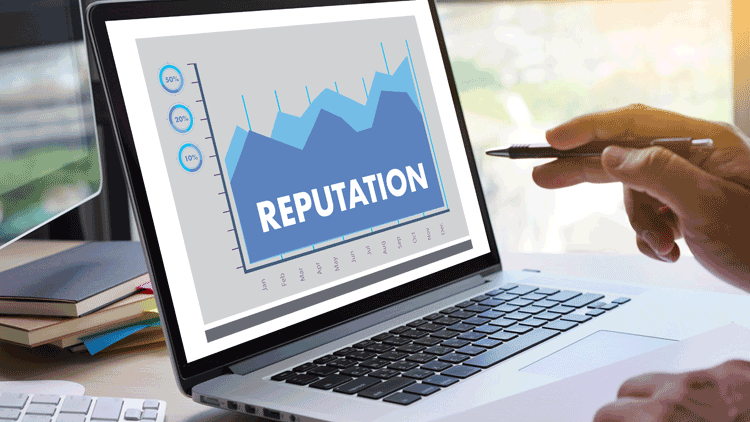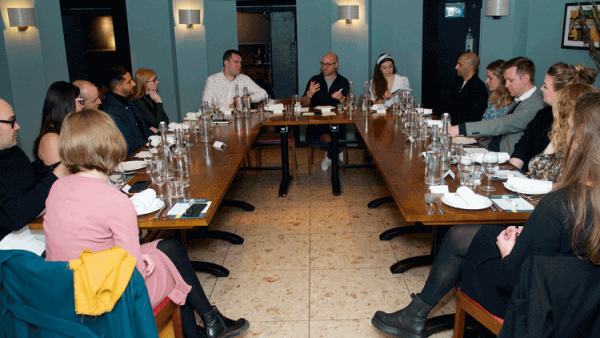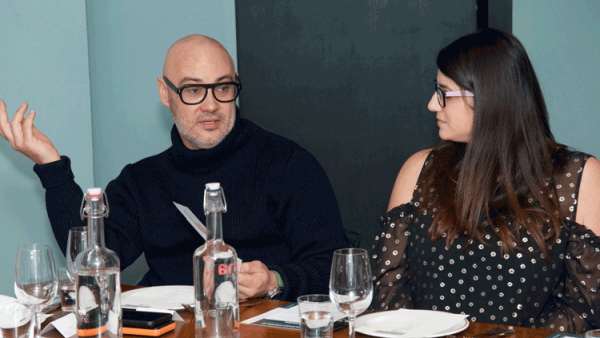Making a name for yourself – how businesses can successfully manage their online reputations

Hospitality businesses have a lot to contend with at the moment, not least staff shortages, supply issues and rising prices, all with the spectre of Covid still looming large over the sector. Such challenges can have a big impact on the customer experience and, with people more willing than ever before to voice their opinions online for everyone to see, this can have wide-reaching ramifications for any restaurant or pub business.
We gathered a group of marketing, communications and social media managers from the restaurant and pub world to discuss how they manage their online reputations, how they cope with the numerous digital channels that interact with them and the weight of reviews and feedback they receive and what they are doing to ensure they stand out from the hospitality pack.
Having a digital presence
Marie Kinvig: As a result of Covid we had to adapt quite quickly so we started doing delivery and pick up from pubs. We had to create an online ordering system very quickly and change our website and, when everything opened again, we had to install proper online booking systems because not every pub had one. Our online presence shifted dramatically - it was a shift for our customers using their phones to order but it brought a lot of new custom.
Holly Hilton: Having an online presence is incredible as it means you can be everywhere, but it also means somebody has to also be everywhere 24/7 when at 11 pm someone’s messaging you about the menu.
Lauren Troiano: Coming out of lockdown the brand loyalty is much higher at those pubs that really focused on their community. There is not one of our 120 pubs that are exactly the same and those that worked in lockdown to engage with their community have absolutely reaped the rewards from it. Some are classic boozers where you wouldn’t expect there to be a digital presence and for people to leave reviews about having a great pint, but even in those wet-led pubs with an older demographic we are now receiving reviews. Getting the pubs onboard the digital journey was very difficult but some of the reviews they are getting, as a result, are amazing.
Responding to complaints
Priten Mistry: Online and reputation management is very important for us. We’ve got a big presence on Facebook and Twitter, so we have to be very responsive to that. From a restaurant perspective, if there is an issue we try and deal with it in the restaurant but when it’s for delivery and online orders people often go to Twitter particularly to complain so we have a social media agent who tries to cut things off at the pass and deal with any issues. They respond and we then catch up the next morning, unless it is serious and then it will be escalated to the central team
Megan Burton-Brown: People expect to be able to message a brand on whatever channel they choose and get a reply straight away, and that was especially challenging in Covid when people were asking whether dine-in was available. To be able to reply to every message and not be on the phone all the time is hard. We are ‘grab and go’ so we can’t always hand over an iPad and get feedback straight away. Reputation has helped us with the Google side of things and where we can we send automated responses but without being robotic sounding. We have an inbox filter, so we respond to everything now, good, bad or otherwise.
Who responds and how?
MK: We offer training and support [to our publicans] and give response guides and tone of voice packs. We put the pub managers in charge of their own socials in terms of responding. They have to take responsibility for it themselves and do it in a way that doesn’t tarnish the brand, and which grows brand loyalty.
HH: It is difficult and has certainly been a challenge for me because I’m the one that will go onto every single platform and respond personally to every single comment. And there are so many platforms. It’s about making sure you empathise with every customer and are alert all the time. As a start-up we have 10 stores and a lot of delivery customers and, as we open more stores, we will have to bring somebody else on board to do it.
Tony Kent: We have a platform that brings all this into one place. It gives you the tools to be more efficient about it. It’s not about automating responses, although we do offer that facility, but about getting to know when reviews are coming in and be alerted to them. It takes the onus off people having to spend so much time on it.
Heath Ball: I’m quite brutal in my responses. It’s my business, The Red Lion and Sun is my baby and I take it really personally. If we’ve made a mistake, I’ll go out of my way to make it better, but if someone is just going to be a knob, I’m going to read all the other reviews they’ve ever written, pick them apart and give them an appropriate response. People see I’m engaged with my business, which is the end goal. It’s an old school publican type of vibe.
Rosie Swaffer: Historically we would only respond to negativity, but a lot of managers didn’t take ownership of it. I believe managers are like mini restaurateurs and they should take pride in that and want to know what people are saying about their restaurants. We are using Sidechick [a chicken concept] as a pilot in terms of how we respond to reviews.
Nazrin Ibadova: We tend to not respond to silly comments and not take it seriously in terms of our feedback to the team. We don’t respond to ever comment, or review, or message because it’s not sustainable. If something is really serious, we take it offline. We do collate every single review and have the managers discuss them to understand the situation.
Stacey Young: Reviews are not something we are spending a lot of time looking at and that’s probably down to manpower. The pubs have a responsibility for their own channels, but we can oversee what they are doing. When they were closed, we took over and put out automated messages and responded to any enquiries but usually the pubs do that themselves. We kind of leave them to it and don’t interfere.
Encouraging reviews
MK: We use Reputation quite heavily for reviews and are introducing it as part of our bonus scheme as an incentive to get authentic responses. We used to focus heavily on TripAdvisor but now we are driving people to Google, which has helped our search impressions.
Richard Brown: We ask for reviews via our booking system [Seven Rooms] and they come to us and nowhere else first. So, if the guest has had a really negative experience, we can diffuse it because we’ve asked them for a review, they have written it and nine times out of 10 they feel like they have voiced their issue and that we can take it on board. With positive ones, we ask them to push them to TripAdvisor. Of course, some people post their negative reviews to TripAdvisor anyway.
Chris Sparling: It makes you look real as a business if you have both negative and positive reviews. If everything is positive you know it isn’t real. I would encourage people to embrace negative feedback, obviously, you want more but positive feedback but as a consumer, I’m looking at how you handle it.
CS: Google reviews are growing exponentially, and TripAdvisor is worried because their reviews are plateauing. Google doesn’t just look at your star rating it encourages you to respond and manage reviews. Our advice would be to respond to as many reviews as possible; just replying and thanking them will help you with your Google search.
Using feedback
MK: We use Reputation for surveys and customer feedback. We can see from the sentiment if we had an issue with items and take that to the food team. We can track when staff are working and see correlations towards sales. It is beneficial to see those trends and turn negative reviews into return visits.
NI: Instagram is becoming a big platform for reviews. It’s good feedback. We deal with the comments and discuss them. We have staff shortages, and we can see that reflected in the reviews and with new teams.
Manu Bhatt: Negative reviews are especially important. If somebody has had a bad experience you can resolve it. We take negative reviews very seriously; it’s what makes or breaks a brand when they go online.
RB: We had a guest the other day at our new pub who said the service in our original pub had not been great but when he heard we were opening a second pub they booked in because of the way we handled the situation.
HH: If we get a negative review, we always thank them for taking the time for reaching out and putting their opinion online and giving us the opportunity to respond. For negative reviews, we always invite the person back again to try and change their experience. We will not have a business tomorrow unless we make those customers happy.
LA: We had issues with one of our chicken suppliers that didn’t get the brining process right, so it was going out to customers too salty. We thought it was something happening in just one site but by tracking the negative reviews we realised it was happening across the company.
MK: Our review numbers have gone up massively in the past year, almost double. I think people want to be heard. We’ve managed to keep that review level quite high, and we correlate them with other digital platforms such as our booking platform and Google analytics to identify demographic trends and how long people are sitting with us. If there has been a serious change in how long people are staying with us – from 35 minutes to 60, for example, we can look into what has caused that. We also go back through our Reputation platform and identify keyword maps and what people are picking up on in their reviews. We changed our menu and had a serious issue with our burger buns. Previously it would have been difficult to go to the food team and say the buns are crap, but we can now clearly identify the problem.
Challenges
PM: One area that’s a new challenge is the move to delivery aggregators. A large proportion of our business is now managed through Deliveroo and Just Eat and customers should go to those partners if they have an issue but a lot of them come to us instead. There’s a gap in between managing customer issues between Pizza Hut and third parties which we’ve not yet cracked.
LA: What we have to be cognisant of is the fact that this will only get worse. As our businesses grow and develop, we will continue to give them over to third parties. I have staffing challenges and therefore reviews trends will go up and down based on that, dark kitchens where I’m giving it over to a third party, and then e-commerce business fulfillment and production. As much as we can rail against it, we have to future-proof our business and ask what technology is out there to help, what the trends are that we need to be tracking, and what we need to be doing now.
MBB: Are 18-20s year-olds looking at Google reviews or Tik Tok? We need to be aware of where to look. I don’t think the younger generation will ever go and email a business about a complaint; they will always go online.
"Negative reviews are especially important.
If somebody has had a bad
experience you can resolve it"
HB: Coming out of lockdown I think everyone had very unrealistic expectations about what was going on and that’s quite hard to manage.
PM: The opportunity for us is really around Google reviews. We know we need to get better as that is not something we currently look at. We haven’t got a solid approach to deal with a lot of external channels
SY: We should be looking at reviews more, but I’m not sure who is going to do that because it is a job in itself to look at hundreds of social pages.
Measuring customer experience and loyalty
CS: Part of our proposition is to help businesses understand their customer experience and the way we define that is three ways. One, how are you delivering against your brand promise? Two, what are people saying about you? Three, what do they say to you? Because what they say to you is ultimately what keeps them coming back. When you’re trying to measure loyalty, you have to understand what you’re trying to do as a business. What’s the key business metric you are trying to drive? It is normally sales and retention. How do you use feedback to help you drive that? It’s different for every business.
RS: With loyalty, our meal kit sales spoke for themselves and we have a very strong delivery presence. We find we have a lot of crossover from people who get delivery and those who eat in the restaurants. At other places, I’ve worked at they have viewed Deliveroo customers as people who don’t go out to eat and just eat at home whatever is in their delivery radius.
PM: We’ve historically used intent to return as a metric. Customers get sent a survey after they have dined with us and we split it out by day part and occasion - buffet time, dine in time, weekends, takeaway - to get a feel for whether there are issues in certain areas. The intent to revisit scores are published monthly and shared across our 185 restaurants and the store managers, who can identify at store level if there are issues.
TK: Do you have a metric for each of your restaurants about the likelihood to return?
PM: We’ve got a target for dine-in versus takeaway.
TK: And have you been able to correlate that to actual behaviour?
PM: It’s a bit of a challenge to map that back. Our frequency of guests is three to four times a year. It’s going to become easier now because essentially after we reopened after lockdown one we moved to online ordering, so we’ve got a lot more customer data. Going forward we will be able to track it.
Tracking reputation
MBB: We track our reputation score: it’s an accumulation of how consistent our Google page listings are - whether opening hours match website – as well as the Google reviews we get, whether people are leaving comments and not just stars – and turns it all into one score. It is helpful because it gives the whole picture. It also has a range score of one to 1,000 and shows the industry average, the good performers and the best in class and we can benchmark ourselves against them.
HH: We have taken on a PR agency and they do a lot of press releases and make sure we are on-trend. We put a lot of our reputation out through there and also through our responses to reviews and giving a personal touch. We also have a loyalty scheme and ensure returning customers scan a code so we can track them. We are constantly keeping our brand refreshed.
LA: We could probably do it a bit better. We have used tools in the past but if there is a single tool that can help us track our reputation better, I’ll be up for looking at it.
Round the table:
Megan Burton-Brown, head of marketing, Tortilla
Priten Mistry, head of marketing, Pizza Hut Restaurants UK
Nazrin Ibadova, marketing and communications manager, Harts Group
Manu Bhatt, owner/founder, Little and Large Pub Company
Richard Brown, operations director, Little and Large Pub Company
Heath Ball, managing director, Frisco Group
Lyndsay Anderson, marketing director, Dirty Bones
Rosie Swaffer, head of marketing, Patty & Bun
Stacey Young, social media manager, Shepherd Neame
Marie Kinvig, digital and content marketing manager, Wells & Co
Lauren Troiano, communications and marketing manager - pub partners, Wells & Co
Holly Hilton, head of UK marketing, Poke House
Stefan Chomka, editor, Restaurant by BigHospitality
Chris Sparling, CX strategy director, Reputation
Tony Kent, director enterprise sales, Reputation
Create and Protect Your Brands' Online Reputation
Download Reputation’s and CGA’s report to reveal what 2,000 consumers expect from hospitality operators online, what the main consumer trends are, and how your brand can better create and protect its reputation online.









